By Victor Caneva
Until now, my adventures have been about journeying into the unknown. Traversing new neighborhoods, traipsing up hills with obscene grades, and soothing perspectives of the Adriatic have been truly therapeutic for me in a trying season of life. But last Saturday’s walk was cathartic in a different way. For the first time in a long time, I was joined by my dearest partner in discovery, my wife Ashley.
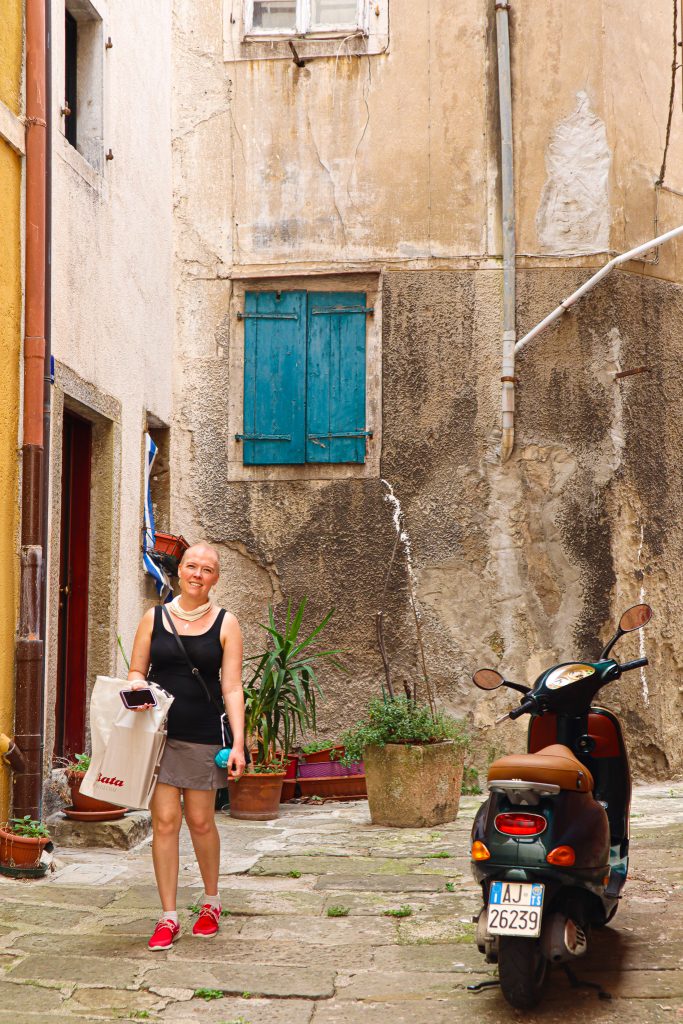
Our story started with adventure, having met on a church trip to Peru. I caught telling glimpses of her character as she lovingly played with children with disabilities, but I knew she was the one when she dared to try a bite of my deep fried cuy (guinea pig).
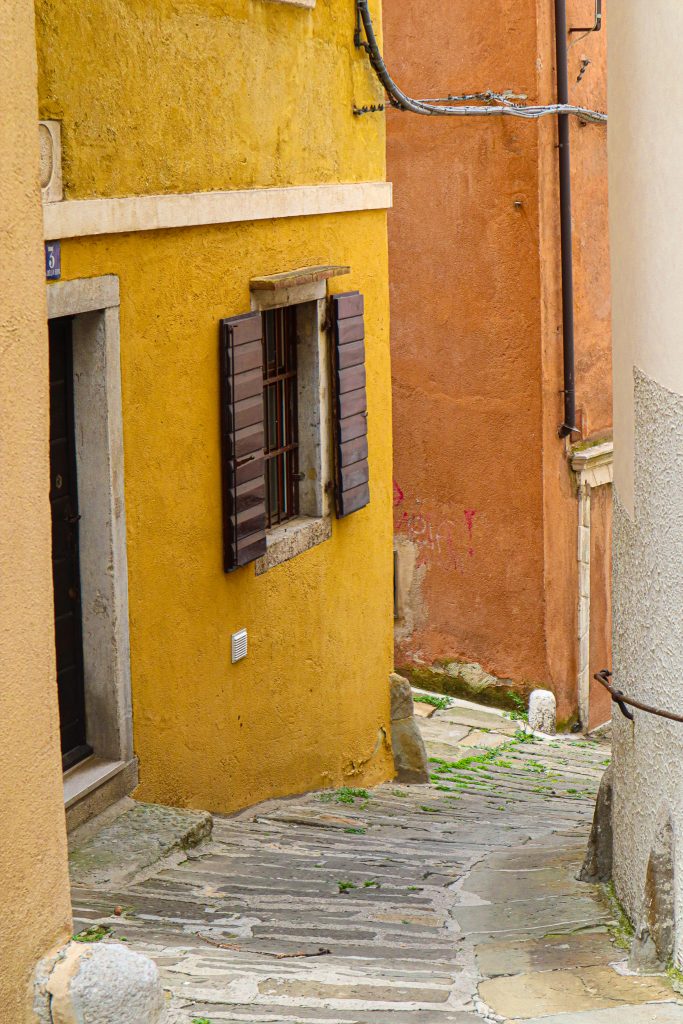
Thirteen years and 5 continents later, we were just beginning our greatest adventure yet, starting a new chapter of life in Trieste when the twin bullies of cancer and Covid-19 stopped our escapades in their tracks. After months of fatigue and isolating precautions due to coronavirus, Ashley felt strong enough to accompany me on a walk. So, taking our time and staying close to home, we rediscovered the Trieste we first fell in love with.
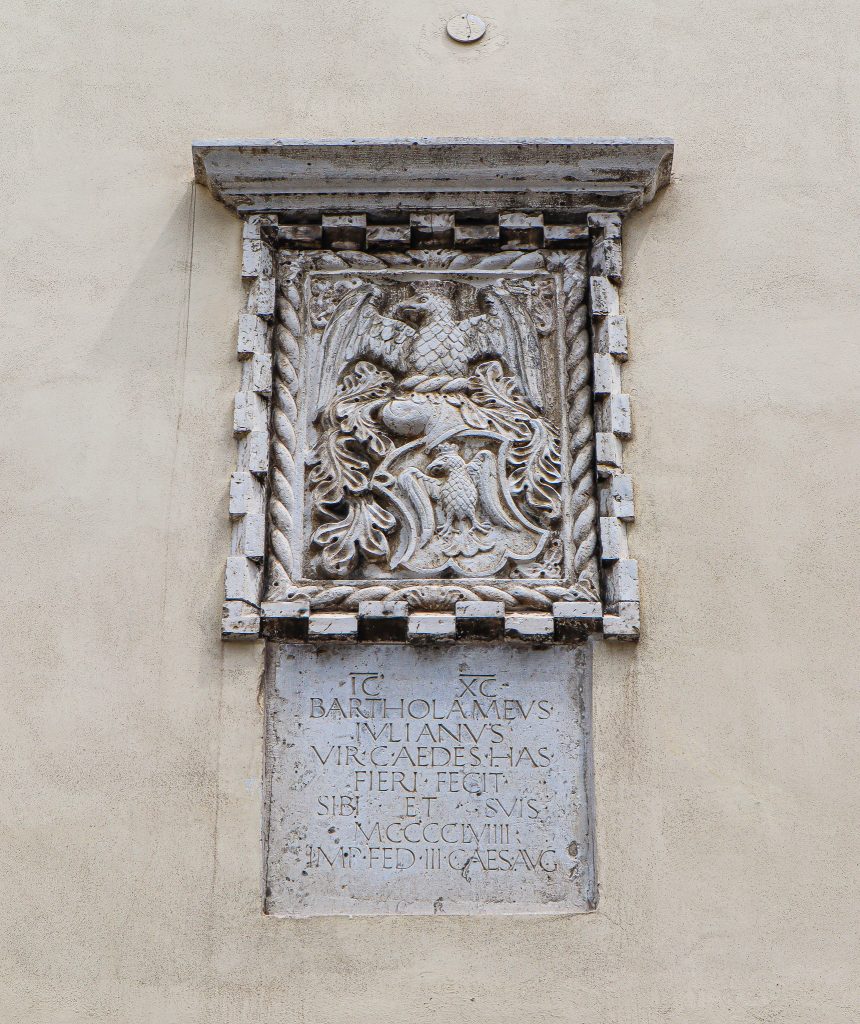
Vendors selling fresh produce were set up in Piazza Hortis as we started our trek in Cavana, one of the first areas of Trieste we experienced on our maiden trip to the city.
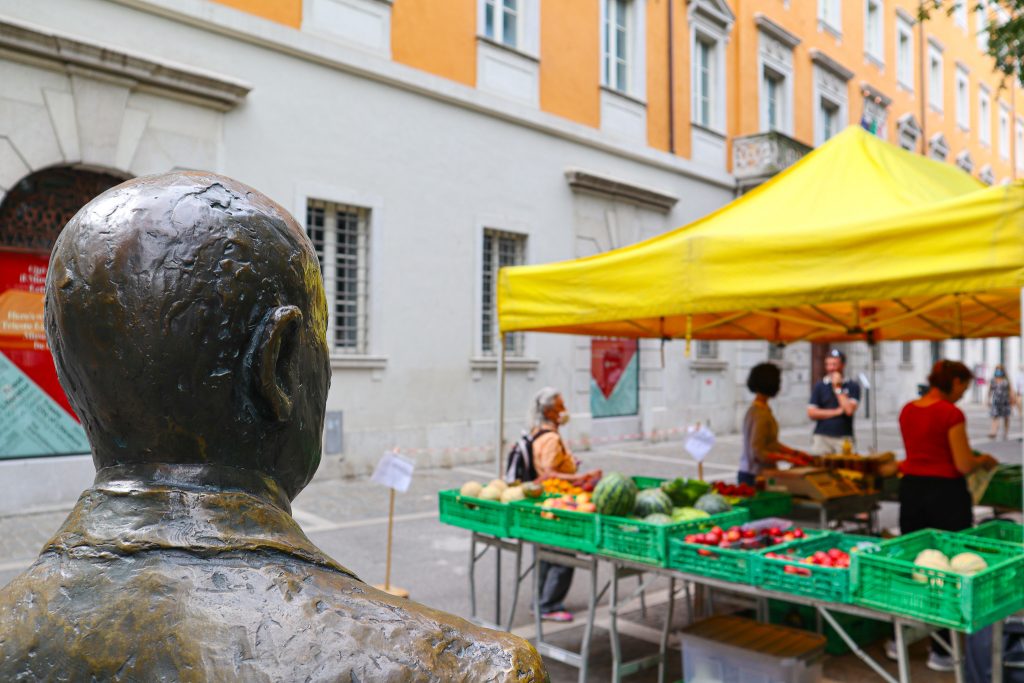
The statue of Italo Svevo looked on longingly, as if he really wanted to try some sweet ciliege (cherries). Piazza Hortis, once the site of a medieval Franciscan convent, is now flanked by the Civic Library and a historic nautical institute founded in 1753 by Maria Theresa of Austria.
The piazza’s namesake, Attilio Hortis, was a Triestino lawyer, literary scholar, Italian senator, and the former director of the library. His bust stands in the gardens in the center of the piazza, but unfortunately his nose is missing, likely the victim of vandalism… but I like to think it’s the result of a colossal sneeze.
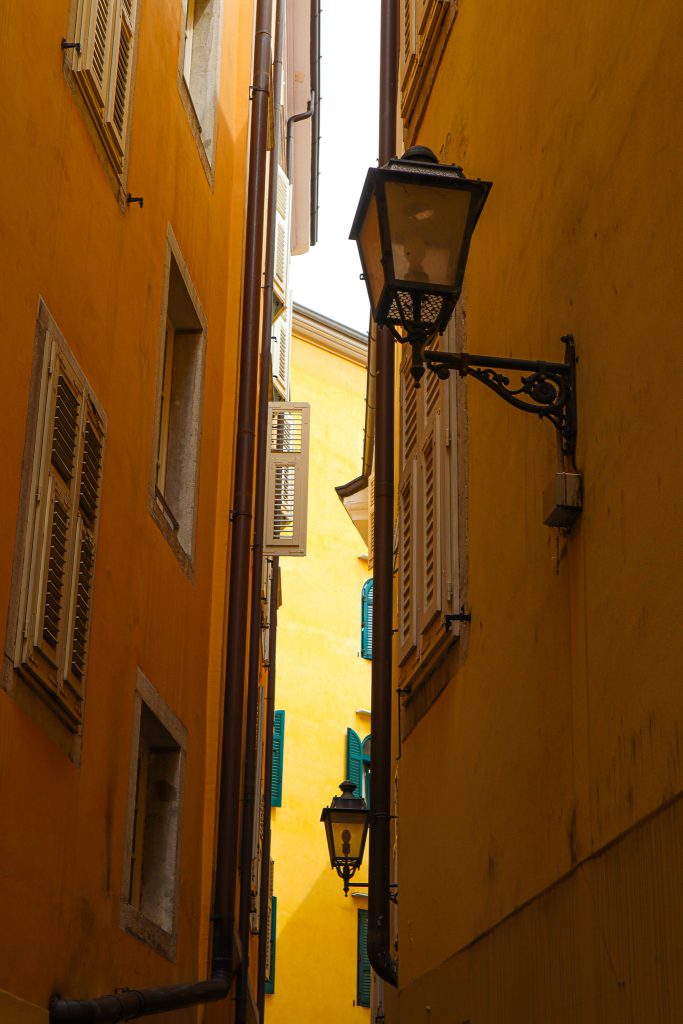
As Piazza Hortis opened up onto Via di Cavana, a bustling pedestrian thoroughfare lined with shops, restaurants, and pharmacies, we passed by our favorite local fruit and veg, Antica Bottega Nangano. The owner takes a lot of pride in his wares and even gave us a fantastic recipe for ceci (chikpea) soup.
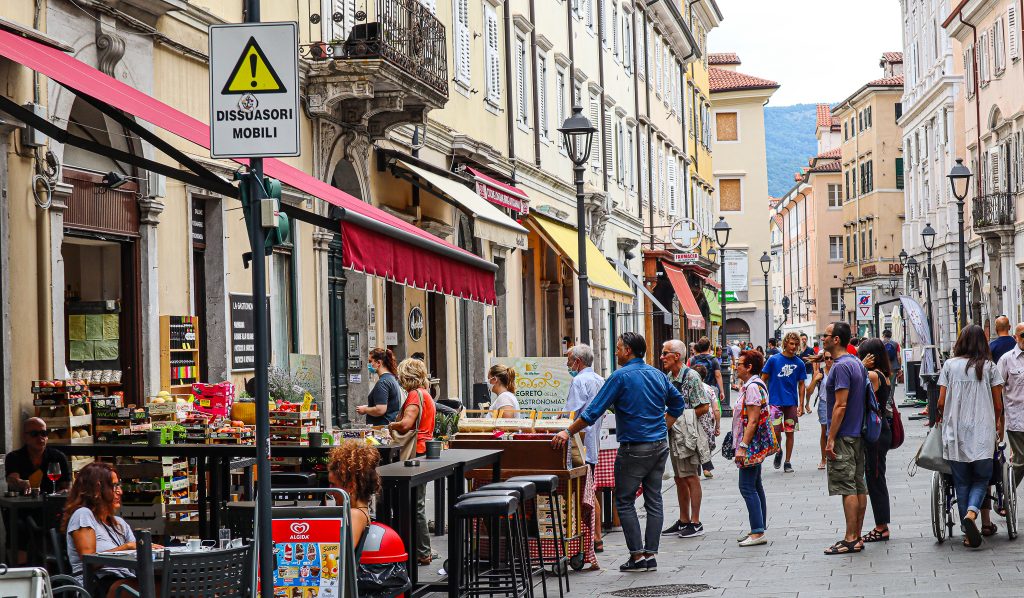
We continued further, arriving at Piazza di Cavana which originated in medieval times. The Porta di Cavana, an ancient gate built in 1321, once stood in the square near warehouses that stored salt, a valuable commodity at the time.
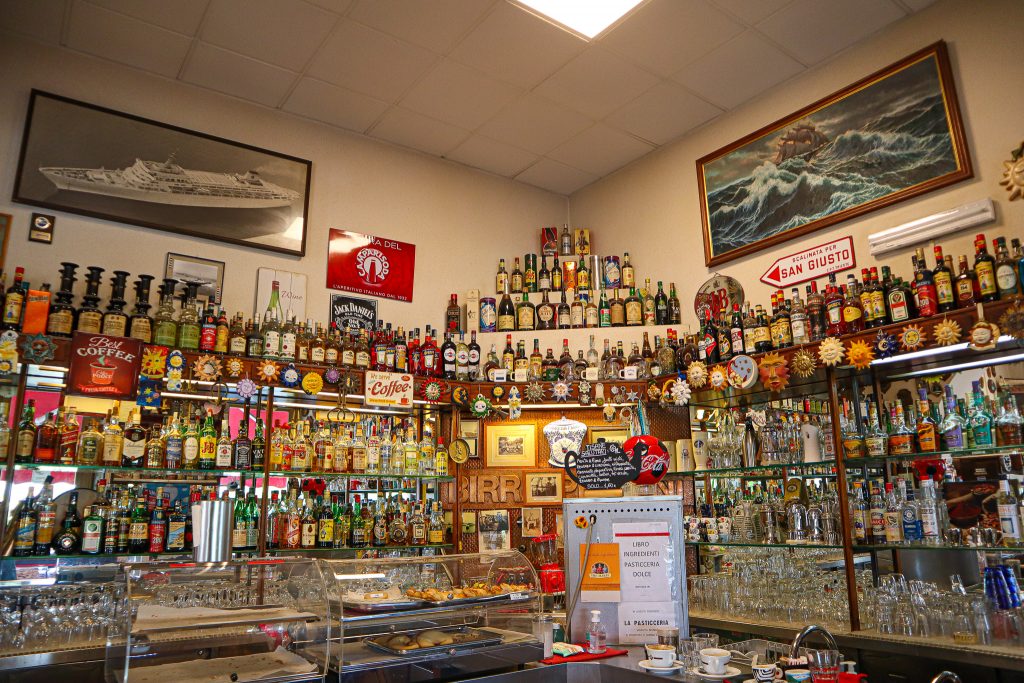
The atmosphere of this area is as inviting as the history is intriguing. Charm-oozing, narrow alleys branch off from Via di Cavana up to Città Vecchia, where little osterie and ristoranti await regulars and tourists alike. These walkable areas made a poignant impression on us when we visited Trieste. Our dream was to live in a city where we could negotiate our daily needs on foot that also offered a lot of variety. Central Trieste definitely fits that bill.
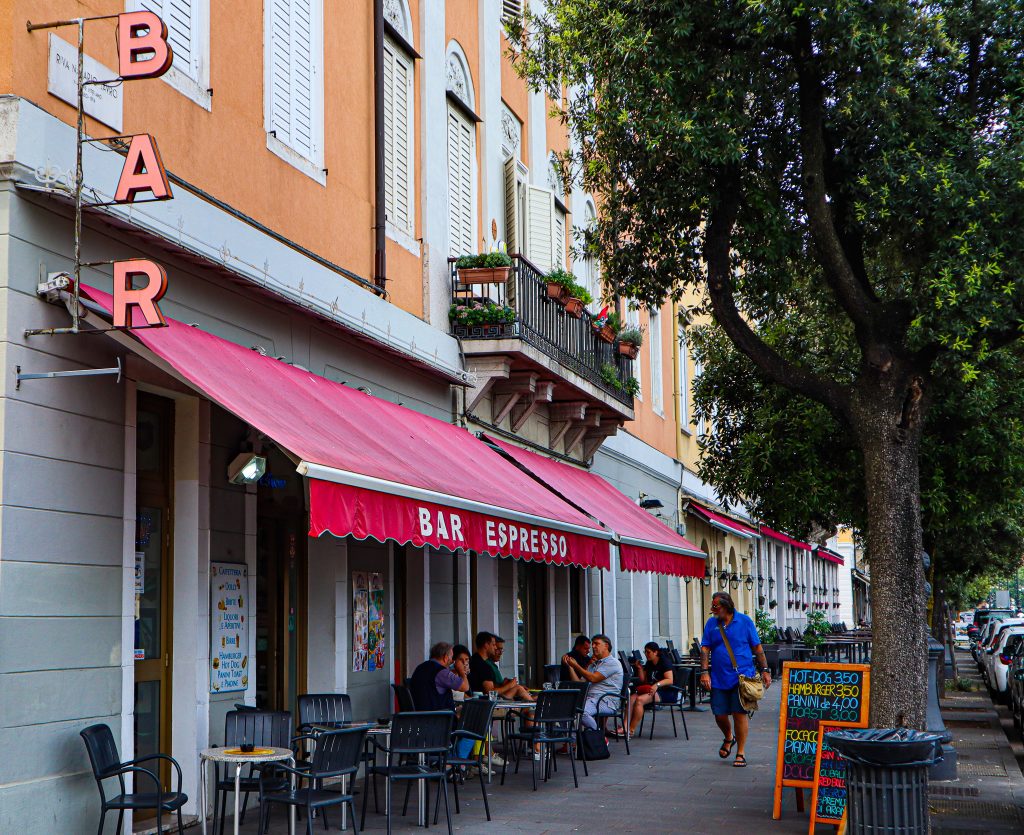
Desiring to recreate some of our initial Trieste experiences, we headed to the Rive and Bar Espresso, where we had our first ever coffee in Trieste. Sitting outside with brioches (or croissants) and caffe lattes (cappuccinos in the rest of Italy) we enjoyed the breeze and some conversation with the owner, who is very knowledgeable about the city. There are tons of photos and plaques on the walls of the bar detailing the military and maritime history of the city.
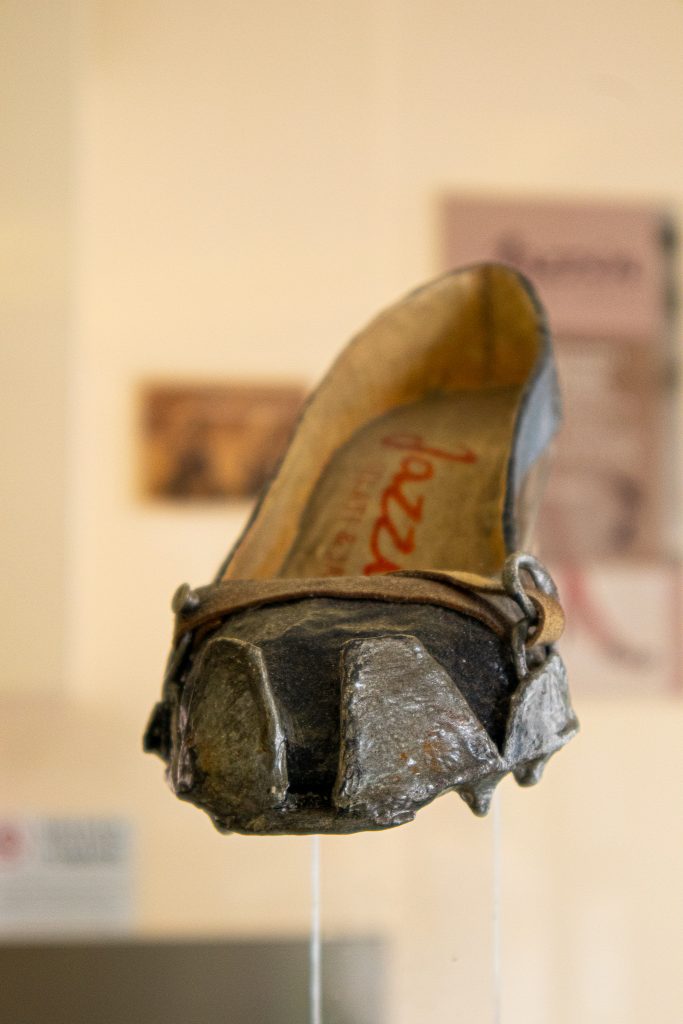
After some caffeine, we continued on to Gelateria Jazzin, which is named after a fascinating historic shoe accessory. Apparently, jazzin, or metal cleats that could be fastened to high-heel shoes, were used by fashionable Triestine on icy days to enable them to wear their flashy footwear without falling on their faces. I savored a cone of ricotta and citrus gelato as we ambled over to the epicenter of Trieste, Piazza Unità d’Italia.
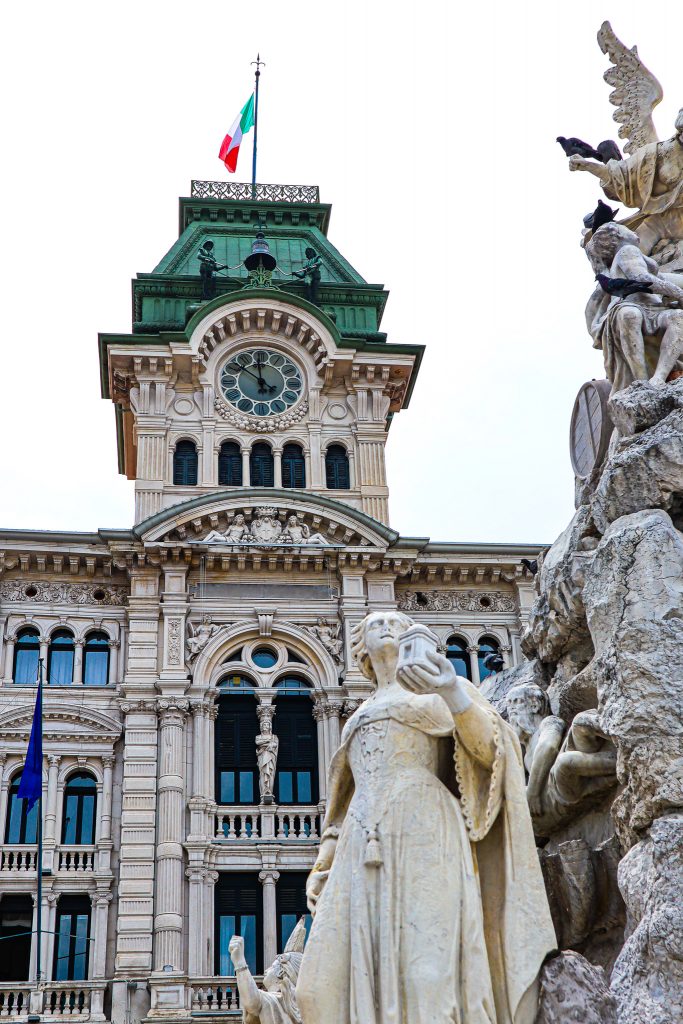
Piazza Unità and its colorful neighbor, Piazza della Borsa, were humming with activity. It was nice to see life returning to “normal” after such a wild start to the year. Triestini were out shopping, talking, and just enjoying being outside.

We decided to avoid the crowds and cut through the Passo della Portizza into the old Jewish Ghetto, just south of Piazza della Borsa. The buzz of the crowd faded as we emerged from the passageway into the tight corridors of the former ghetto. Established in 1697, the Jewish community was forced to live here, surrounded by walls featuring three gates which closed at sunset, ensuring no one entered or exited the quarter. Today, the area is home to a number of unique antique stores and bookshops.
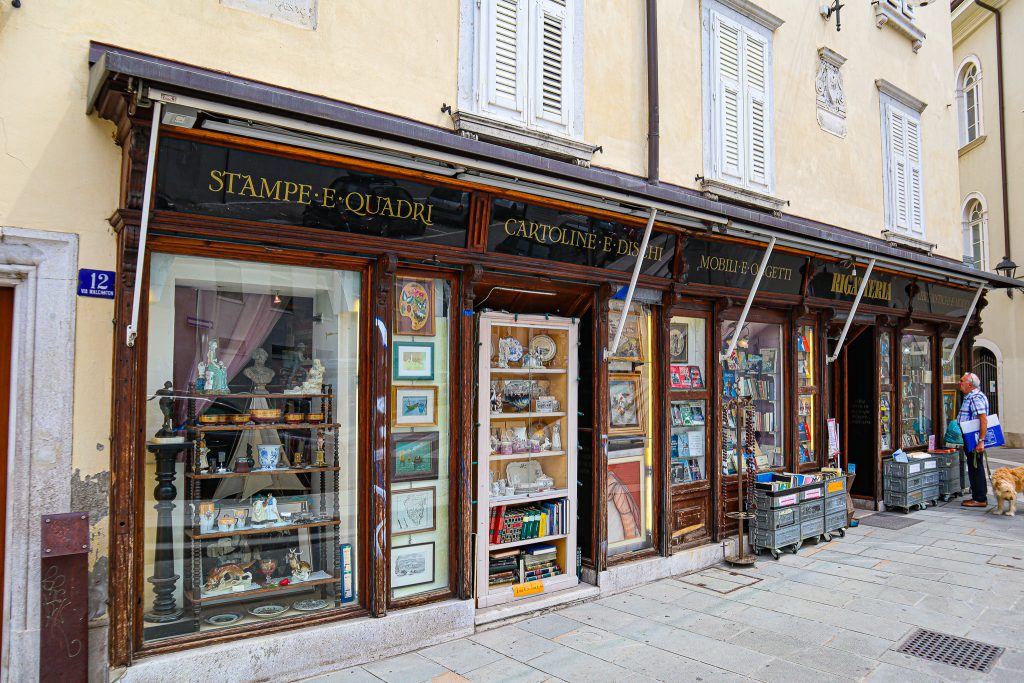
We wound our way through the ghetto and arrived at Via del Teatro Romano, where we were finally able to get some perspective on one of the mysteries that has perplexed Ashley since our first visit. There are some puzzling ruins featuring arches and brickwork between the Roman Theater and Park San Giusto parking lot and we still had no idea what they were. On this occasion we were able to ask a local, who believed they were the remains of homes from the medieval period. Delighted to have some insight after three years of head scratching, Ashley decided she wanted to climb the stairs up to Città Vecchia, her favorite part of town to get lost in.
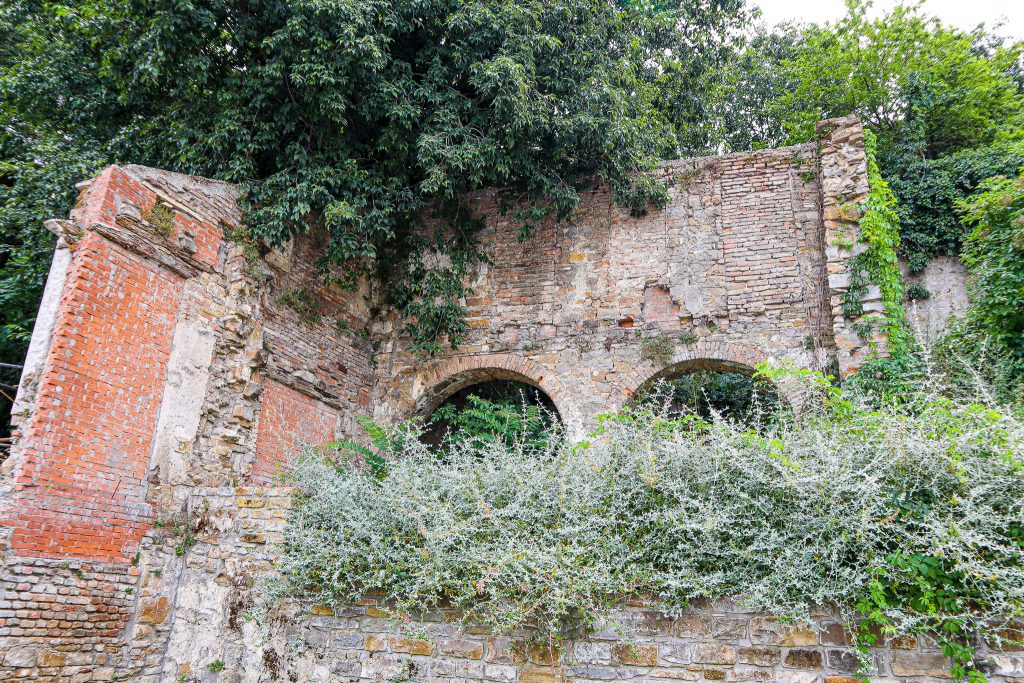
Ashley loves to analyse the stories of buildings as told through their architectural details. A bricked up door or a flying buttress gets her imagination cooking. Città Vecchia, with structures from so many periods, is a lovely place for her to indulge her passionate nerdiness. I enjoyed watching her smile as she pondered the history of a buckled entryway held together with huge metal staples. Fresh diversions lightened the load of a heavy year and strengthened our hope for a brighter future.
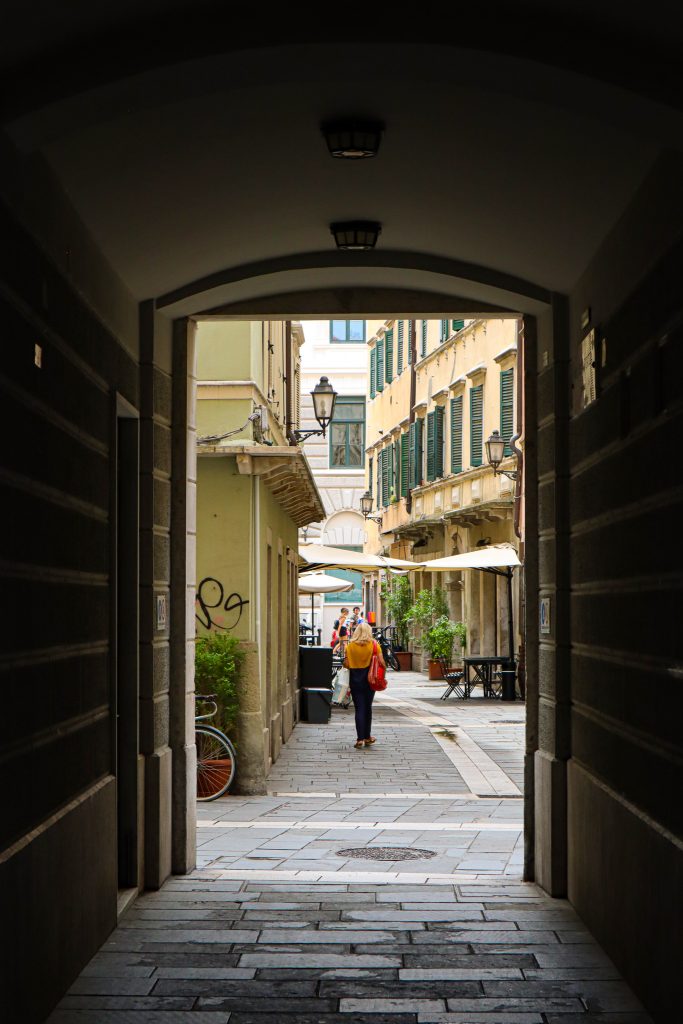
We ended our excursion in style at CEMÛT, a Friulian wine bar on Via dei Capitelli where we shared some frico, a cheesy dish originating in Carnia, where my family hails from.

I still have a lot to learn about my Carnian/Friulian heritage and I relish at the chance to experience the culture. I asked for a Friulian sparkling white wine and our gracious waitress suggested one she boldly claimed trumped prosecco. It was almost as refreshing as our time together had been. Ashley and I said mandi (the Friulian equivalent of ciao), and headed home, rejuvenated and thankful for the chance to explore together once again.

























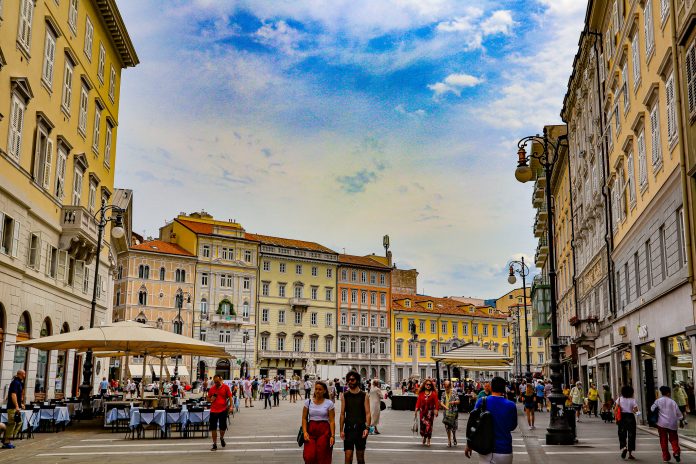




What a thoroughly delightful glimpse into what appears to be a truly lovely city. For those of us who still cannot travel, thank you for sharing a bit of Bella Italia with us. Grazie mille!
Interesting, Grazie